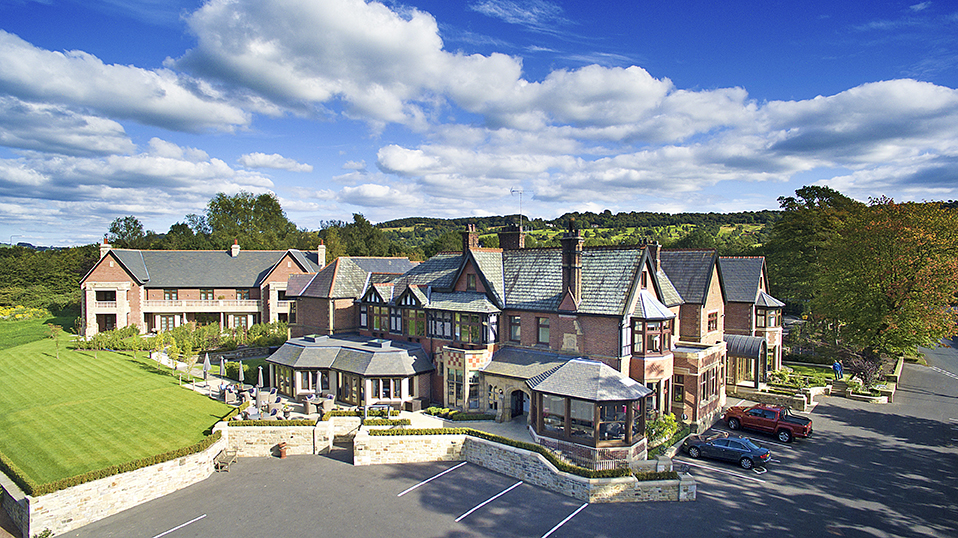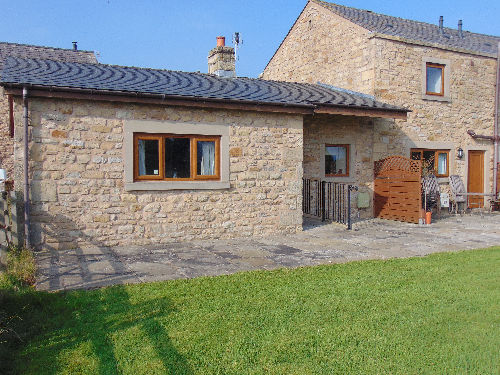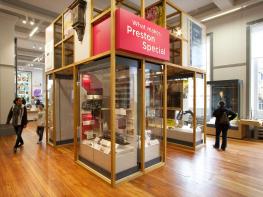Once a coaching inn, The Millstone is situated in a village just outside Blackburn. It provides…
Rural revelations in Witton

Not just a country park but real countryside in the heart of urban Lancashire
4.5 miles (7.2kms)
About the walk
Witton Park was formerly the home of the Fieldens, one of Blackburn's foremost families whose wealth derived from extensive interests in both cotton and land. They had bought the Witton manor, which included a farm in 1721, but its was not until 1800 that Henry Fielden enclosed the park and began building a grand country house befitting his position in society.
A country house, gardens and parkland
Around the house, he laid out formal gardens and glasshouses for the cultivation of exotic flowers and fruits, with woods being planted across the wider estate, notably that on Billinge Hill, which overlooks the park from the north. This was at a time when naturalist explorers were roaming the far flung corners of the Empire and New World in search of new plants and animals, and many of the specimens planted here were then quite novel.
The house was the centre of family life for almost a century, but after 1900, was rarely used. During two World Wars it was requisitioned by the army and then afterwards sold to Blackburn Corporation. By then, Witton House was infested with dry rot and becoming derelict. It was demolished in 1952, although the stables and coach house were renovated and are now used by the local college. Designated as a country park in 1973, and with a new sports arena added in 2014, it is a popular recreation centre, and in the wider context, a valuable wildlife resource. Wetlands flank the ponds and two rivers run through the park, while the wooded slopes provide a variety of quiet habitats for birds, animals and insects as well as wild flowers.
One of Blackburn's famous sons
On the hillock to the west of Billinge Hill is a memorial topograph to one of Blackburn's famous sons, Alfred Wainwright. Born in 1907, he trained as an accountant, but his passion was walking and, following a rambling holiday to the Lake District, he fell in love with the area. Wainwright moved to Kendal in 1941, eventually becoming Borough Treasurer. It wasn't until 1952 that he embarked upon his now-famous Pictorial Guides to the Lakeland Fells. The project took him 13 years, each illustrated by his distinctive line drawings and meticulously detailed maps. Although originally intended for personal enjoyment, he was persuaded to have them published and they have since become regarded as 'bibles' to the fells. He went on to produce, among others, a Companion to the Pennine Way and a whole series of sketchbooks covering much of Britain's uplands, as well as devising a Coast to Coast route. He died in 1991 and his ashes were scattered on Innominate Tarn up on Haystacks.
Walk directions
Follow the main drive past the sports arena, a kiddies' play area and the Pavilion Café, all off to the right. At a junction, go left towards Pleasington and 'Snowy the Crow', passing an adventure playground.
After almost 0.25 miles (400m), at a junction by 'Snowy', take the second of the two paths leaving on the right, which is signed to Crow Wood. Climb the side of a wooded valley, later crossing a bridge to a junction. Turn left up steps and, at the top, go left again. Curve right past another path to continue up the valley. Higher up through gates, cross a track and continue within the narrow strip of woodland, ultimately emerging onto a lane by Billinge Nook Farm.
Go right and immediately left through a tunnel, beyond which a path climbs across the wooded hillside of Billinge Hill. Ignore a diagonally crossing path, but at a second junction higher up, take the bridleway off left. Keep climbing as another path joins to reach a junction at the top, from which the summit viewpoint is to the right.
Walk over the summit, passing left of the plinth and then curving left to a junction. Go left again and, ignoring all side paths, head steadily downhill through the trees, eventually meeting a T-junction. Take the path right, which shortly swings left to emerge at a small car park.
Cross to a kissing gate in the left corner and head straight out across hilltop pasture, aiming for a stile beside a prominent lone tree. Continue over a knoll overlooking a pool in the base of an old quarry. It is a fine viewpoint and marked with a topograph dedicated to Alfred Wainwright. Carry on down the broad spine of the hill, crossing an intervening boundary to find a stile at the bottom-left corner into a wood. Follow a path through the trees above the old quarry of Butler's Delf to emerge onto a track by cottages.
Go left, but then leave after a few paces along a narrow footpath signed off right. Ignore a path off right and keep ahead beside an old wall appearing on the left. Over a stile at the end, head straight down open pasture, passing left of a fenced pool. Towards the bottom, draw beside a ditch and fence to the right. Leave over a stile at the bottom corner and walk out to a drive.
Go right and then first left, passing a pool below Pleasington Old Hall. At the next junction, turn right. Beyond the cemetery gates, bear left across playing fields to a metal footbridge spanning the River Darwen. On the far bank, walk left, dropping to the riverbank a little further along. Cross back at the next bridge and follow the bank upstream back to the car park.
Additional information
Good paths and tracks, some open fields, several stiles
Woodland, pasture and river bank
Can run free in country park, but on lead on farmland
OS Explorer 287 West Pennine Moors
Large car park just off A674
Adjacent to the Pavilion Café
WALKING IN SAFETY
Read our tips to look after yourself and the environment when following this walk.
Find out more
Also in the area
About the area
Discover Lancashire
Lancashire was at the centre of the British cotton industry in the 19th century, which lead to the urbanization of great tracts of the area. The cotton boom came and went, but the industrial profile remains. Lancashire’s resorts, Blackpool, Southport and Morecambe Bay, were originally developed to meet the leisure needs of the cotton mill town workers. Blackpool is the biggest and brashest, celebrated for it tower, miles of promenade, and the coloured light ‘illuminations’. Amusements are taken very seriously here, day and night, and visitors can be entertained in a thousand different ways.
The former county town, Lancaster, boasts one of the younger English universities, dating from 1964. Other towns built up to accommodate the mill-workers with back-to-back terraced houses, are Burnley, Blackburn, Rochdale and Accrington. To get out of town, you can head for the Pennines, the ‘backbone of England’, a series of hills stretching from the Peak District National Park to the Scottish borders. To the north of the country is the Forest of Bowland, which despite its name is fairly open country, high up, with great views.
Nearby stays
Restaurants and Pubs
Nearby experiences
Recommended things to do
Why choose Rated Trips?
Your trusted guide to rated places across the UK
The best coverage
Discover more than 15,000 professionally rated places to stay, eat and visit from across the UK and Ireland.
Quality assured
Choose a place to stay safe in the knowledge that it has been expertly assessed by trained assessors.
Plan your next trip
Search by location or the type of place you're visiting to find your next ideal holiday experience.
Travel inspiration
Read our articles, city guides and recommended things to do for inspiration. We're here to help you explore the UK.













